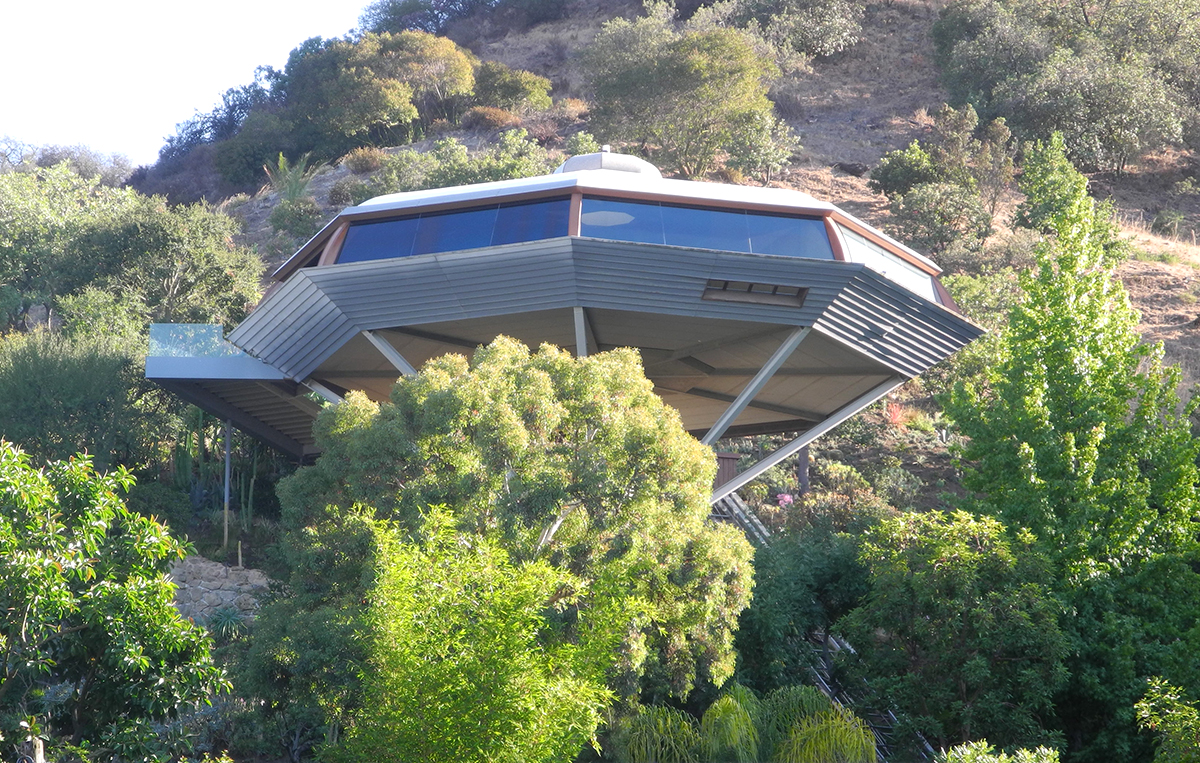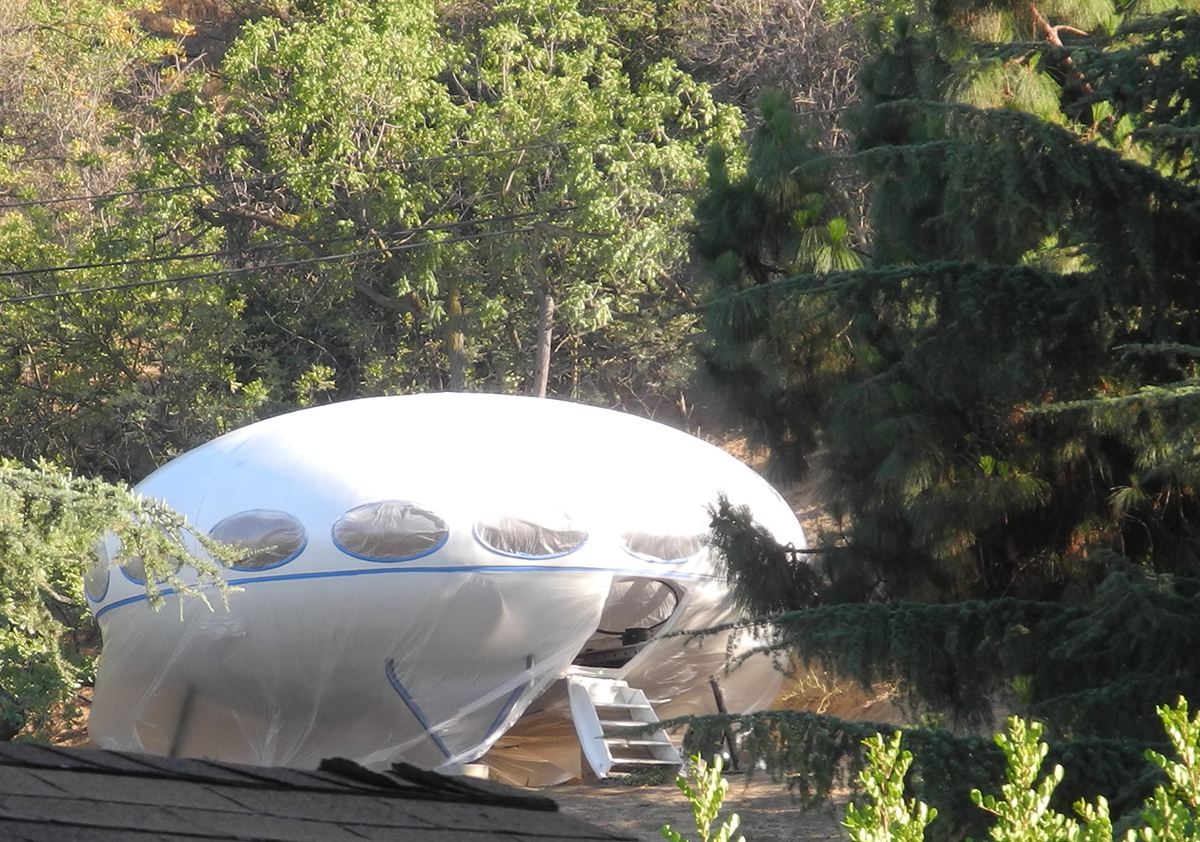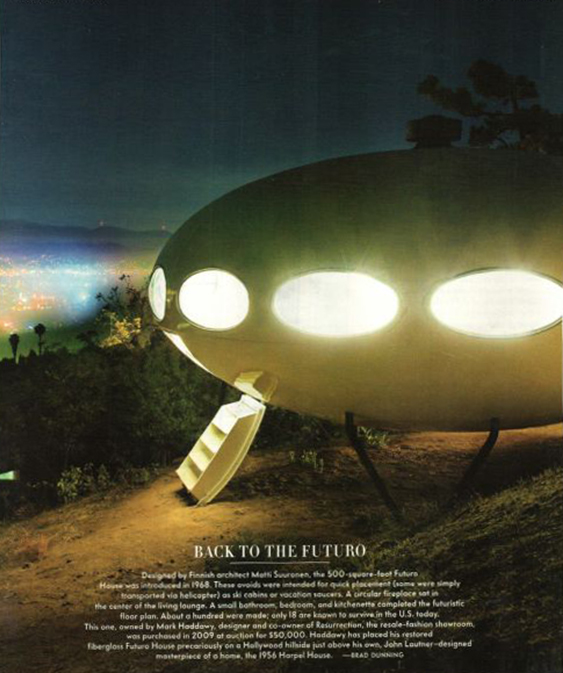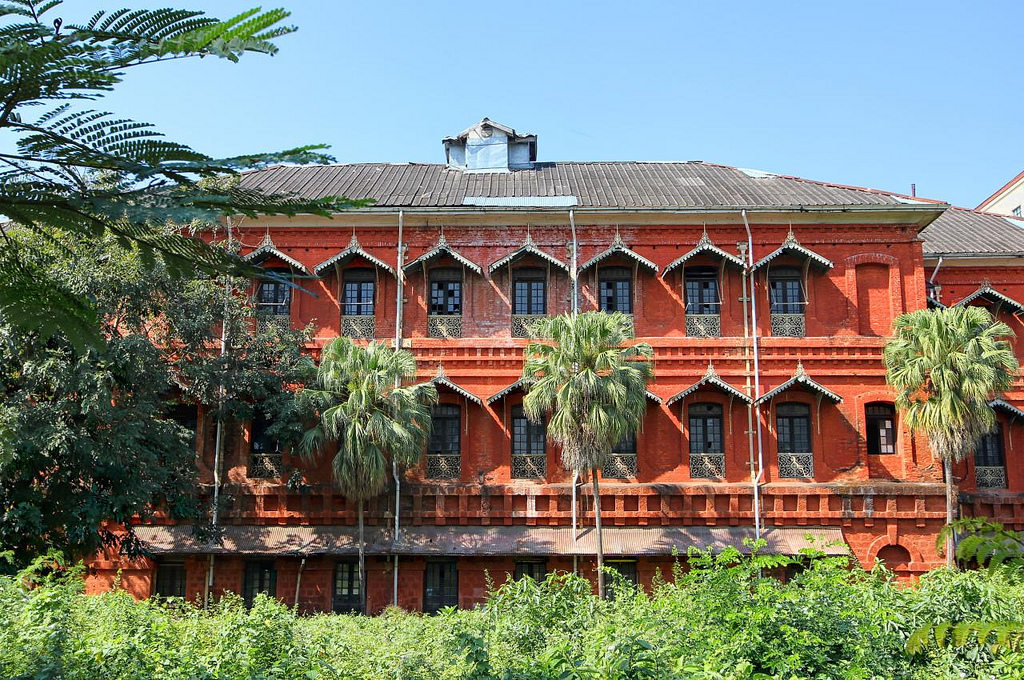I'll bet this is the first Noirish submission ever posted from Yangon, Myanmar! I've been an Asia travel freak for most of my life and come here at least once a year. On this trip my wife and I have done a little adventuring in Mon State in Southern Myanmar.
Normally L.A. architecture is the furthest thing from my mind on a trip like this but south of here, in city of Bago, I came across a magazine article that tied in with a little exploration I did in the Hollywood Hills last month. So I thought I'd break tradition and post from here.
I had long been curious to see the so called Chemosphere House at 7776 Torreyson Drive; off Mulholland just east of Laurel Canyon. It's been featured in lots of TV shows and films, but I remember it best from Brian De Palma's Body Double.
A few Sundays ago I rode my bike up to Torreyson Drive to have a look. Views of the house are largely blocked by trees, but below are are a couple of shots.


I was surprised by the small "pod" house on the lot, and wondered what the story was. My hotel in Bago had a January 2012 Vanity Fair that was lying around, and in it I was surprised to see a beautiful photo of this structure, which apparently is called a Futuro.
 http://www.vanityfair.com/100-years-of-vanity-fair
http://www.vanityfair.com/100-years-of-vanity-fair
The text states:
Designed by Finnish architect Matti Suuronen, the 500-square-foot Futuro House was introduced in 1968. These ovoids were intended for quick placement (some were simply transported via helicopter) as ski cabins of vacation saucers. A circular fireplace sat in the center of the living lounge. A small bathroom, bedroom, and kitchenette completed the futuristic floor plan. About a hundred were made; only 18 are known to survive in the U.S> today. This one, owned by Mark Hadday, designer and co-owner of Resurrection, the resale-fashion showroom, was purchased in 2009 at auction for $50,000. Haddawy has placed his restored fiberglass Futuro House precariously on a Hollywood hillside just above his own, John Lautner-designed masterpiece of a home, the 1956 Harpel House.
Here's more on the Chemosphere House from a Wikipedia article (which cites a different owner of the property):
The Chemosphere, designed by American architect John Lautner in 1960, is an innovative Modernist octagon house in Los Angeles, California. The building, which the Encyclopædia Britannica once called "the most modern home built in the world", is admired both for the ingenuity of its solution to the problem of the site and for its unique design.
The building stands on the San Fernando Valley side of the Hollywood Hills, just off of Mulholland Drive. It is a one story octagon with around 2200 square feet of living space. Most distinctively, the house is perched atop a 5-foot-wide concrete pole nearly thirty feet high. This innovative design was Lautner's solution to a site that, with a slope of 45 degrees, was thought to be practically unbuildable. Because of a concrete pedestal, almost 20 feet in diameter, buried under the earth and supporting the post, the house has survived earthquakes and heavy rains. The house is reached by a funicular. Chemosphere is bisected by a central, exposed brick wall with a fireplace, abutted by subdued seating, in the middle.
The lot had been given to a young aerospace engineer by his father-in-law; despite his own limited means, the engineer, Leonard Malin, was determined to live there. Malin had $30,000 to spare. The cost to build Chemosphere, $140,000, was subsidized partly by barter with two sponsoring companies, the Southern California Gas Company and the Chem Seal Corporation. Chem Seal provided the experimental coatings and resins to put the house together and inspired the name Chemosphere. (Lautner originally wanted to call the house Chapiteau.) In the end Malin paid $80,000 in cash. The Malins and their four children lived there until rising costs and the demise of the aerospace industry forced them to sell in 1972.
In 1976, the house's second owner, Dr. Richard Kuhn, was stabbed to death at his home in a robbery by two men, who were subsequently convicted and sentenced to life in prison.
By 1997, the interior had become run down; for over 10 years it had been rented out and used for parties and as a result the interior finishes had undergone major and anachronistic alteration.[1] Because of its unique design it proved to be a difficult sell and had sat on the market for most of its time as a rental property.
Since 2000, it has been the Los Angeles home of Benedikt Taschen, of the German publishing house Taschen, who has had the home restored; the only current issue with the home is the relatively high cost of maintenance. The recent restoration, by Escher GuneWardena Architecture, won an award from the Los Angeles Conservancy. Preservation architect Frank Escher wrote the first book on Lautner a few years after moving to Los Angeles in 1988, and oversees the John Lautner Archives. During restoration the architects added details that were unavailable 40 years before, as the technology simply did not exist. The gas company tile was replaced by random-cut slate, which could not be cut thin enough in 1960, despite Lautner's desire for such a finish. The architects also replaced the original thick framed windows with frameless glass. The owners commissioned a pastiche rug by German painter Albert Oehlen and a hanging lamp of bent plexiglass strips by Jorge Pardo, a Los Angeles artist.
The Taschen family planned to commission Rem Koolhaas to build a large new guesthouse at the base of Chemosphere on the site once owned by Leonard Malin's in-laws. The new house was intended to hold an art collection and library and to provide rooms enough for the four children the Taschens have between them. The plans were later cancelled due to fears the annex would visually compete with the main house. During the first few years the Taschens lived there, the house became locally famous for their parties, where photographer Bill Claxton and his model wife Peggy Moffett would carouse with porn stars, jazz musicians and director Billy Wilder.
Before closing, I thought I'd post a photo of the interesting old building that I see from the window of my hotel room. This is the former Rangoon railway station, now in disuse. If you ignore the temple-like details around the windows (and lack of earthquake retrofit plates), it could
almost pass for a 19th century L.A. building, don't you think? But Rangoon and L.A. have little in common except for palm trees, though this place has fewer, and tales of intrigue, which have abounded here for many decades. (Many make our L.A. stories seem like Disney fables by comparison!)
